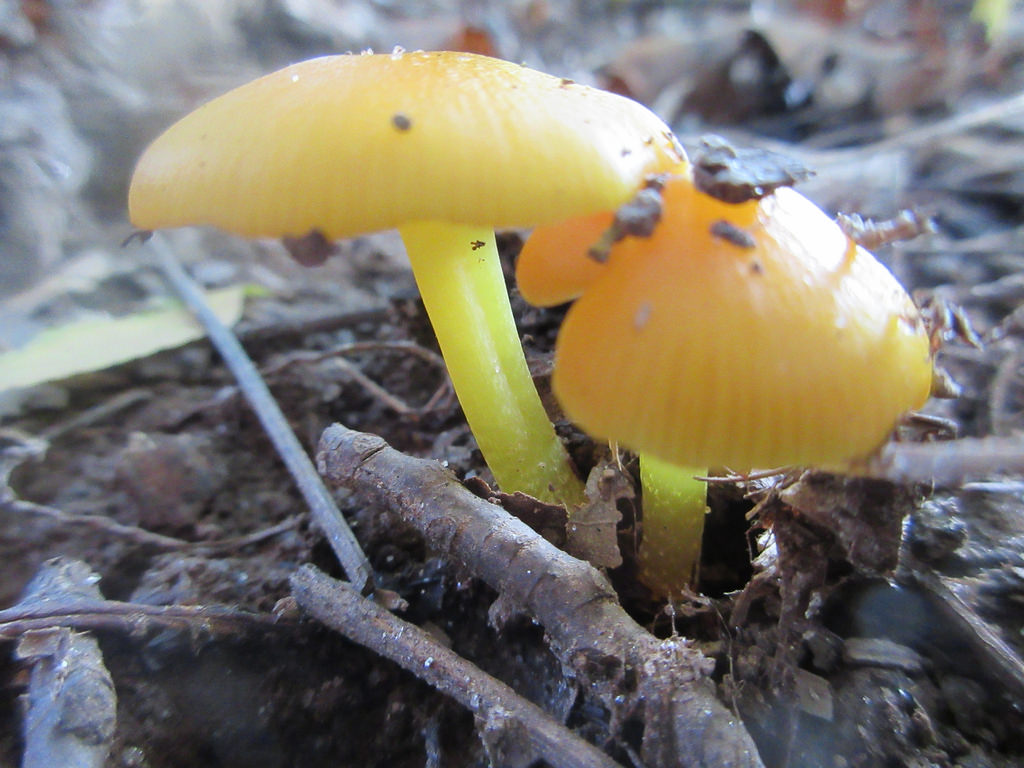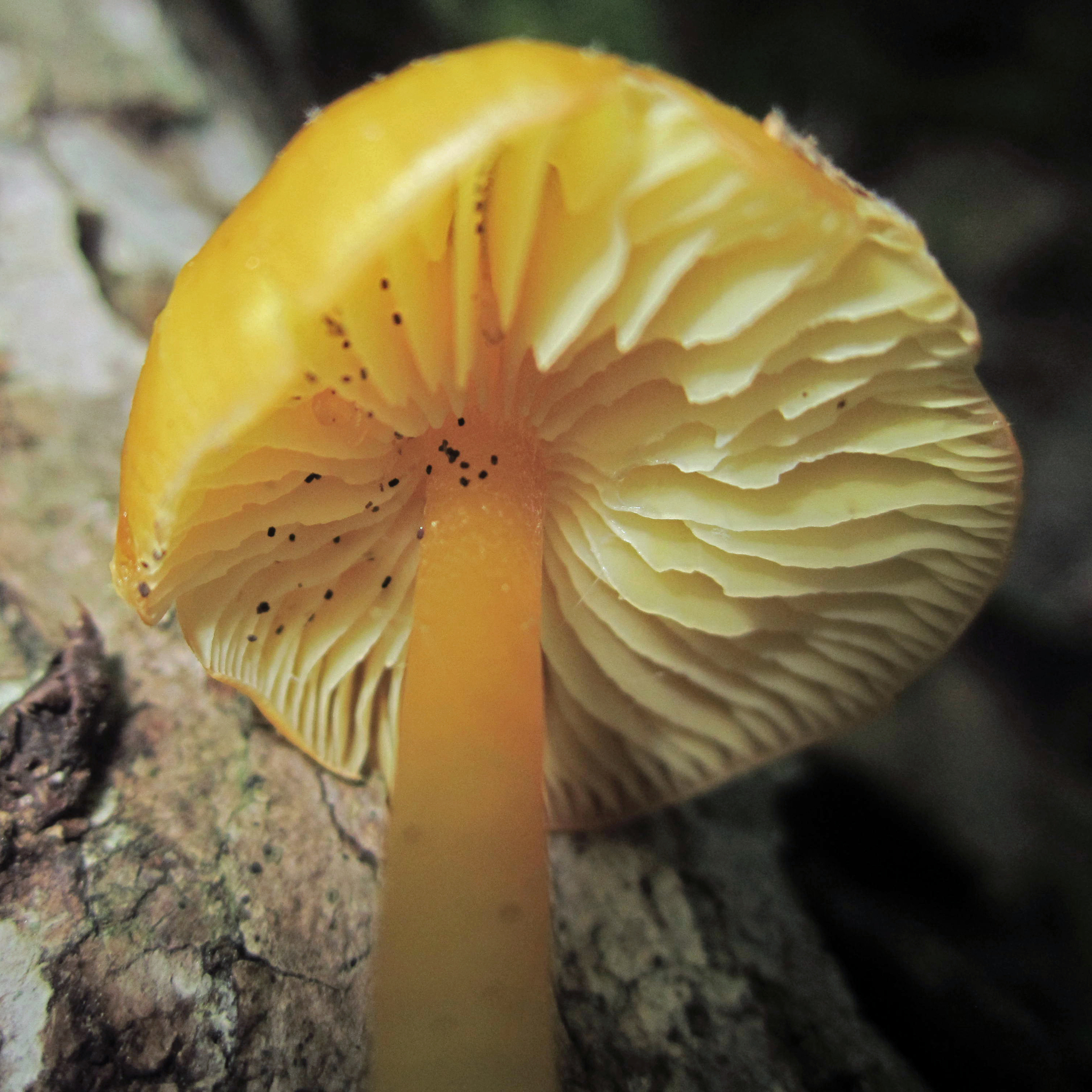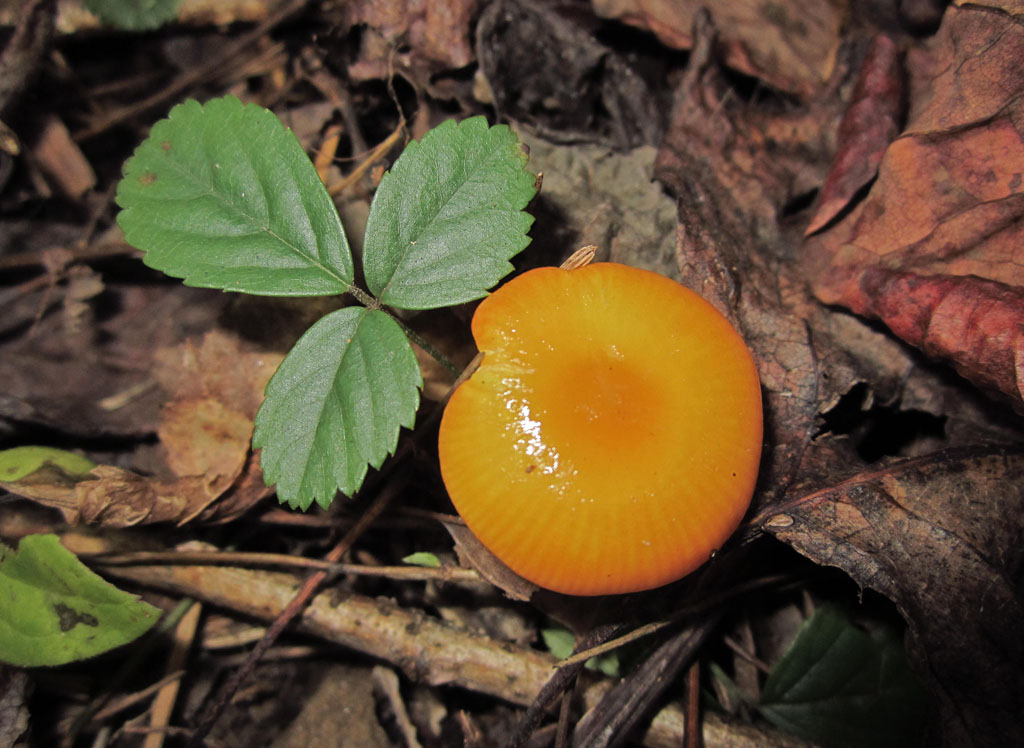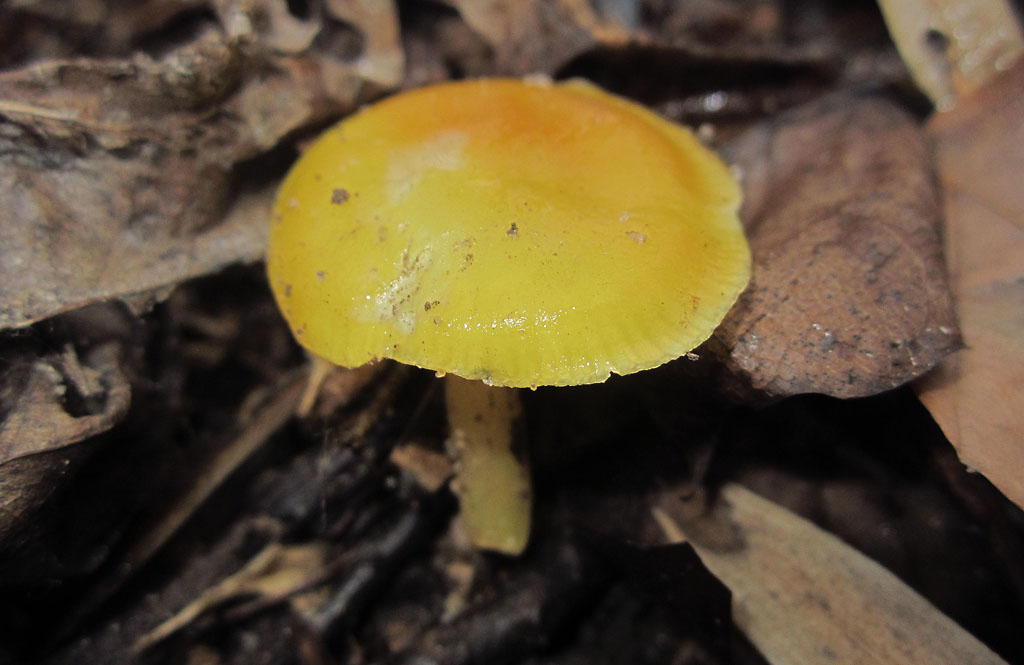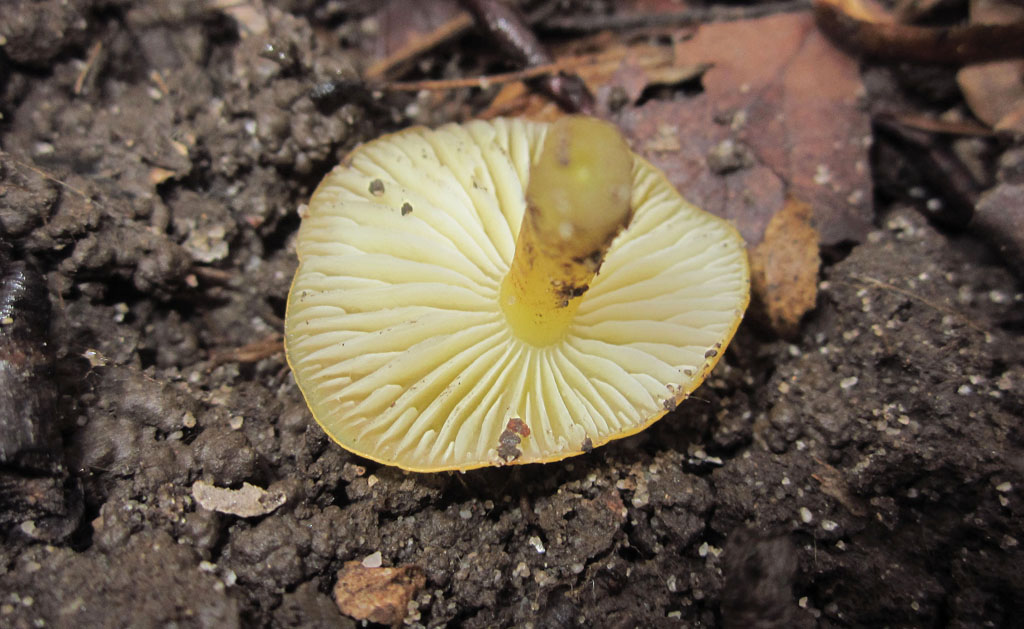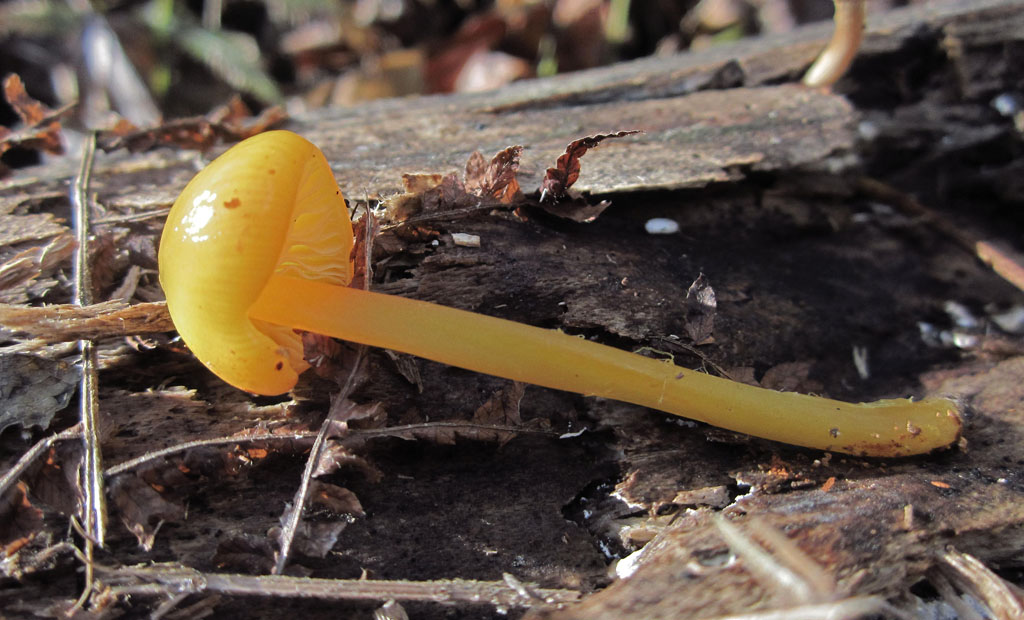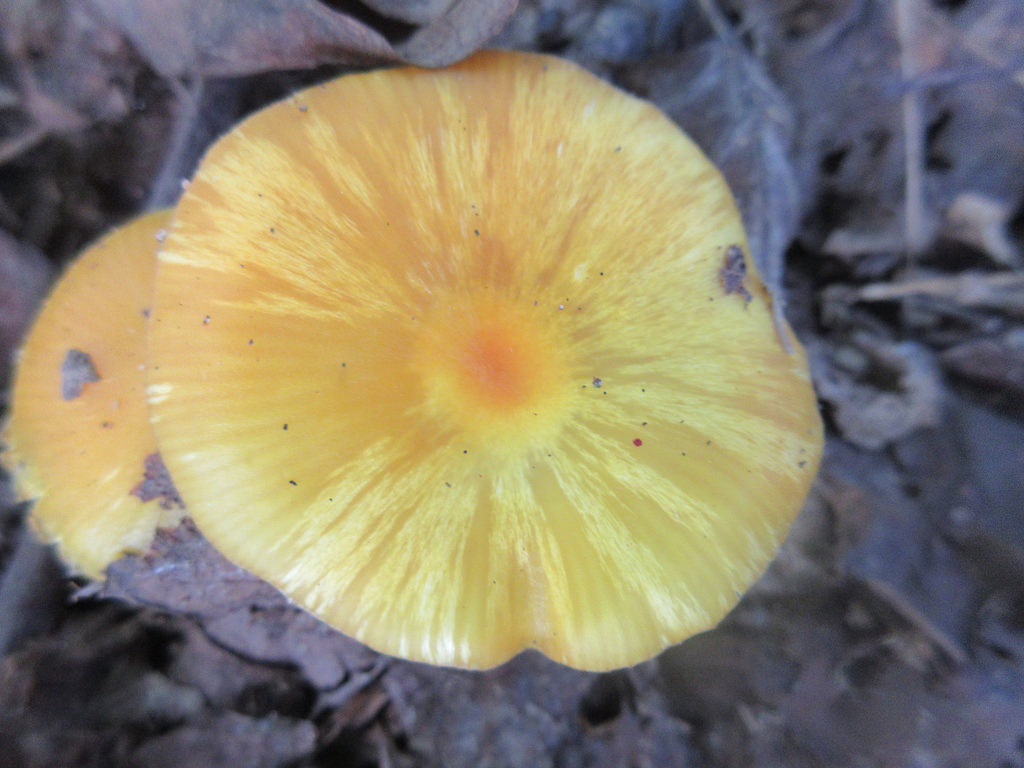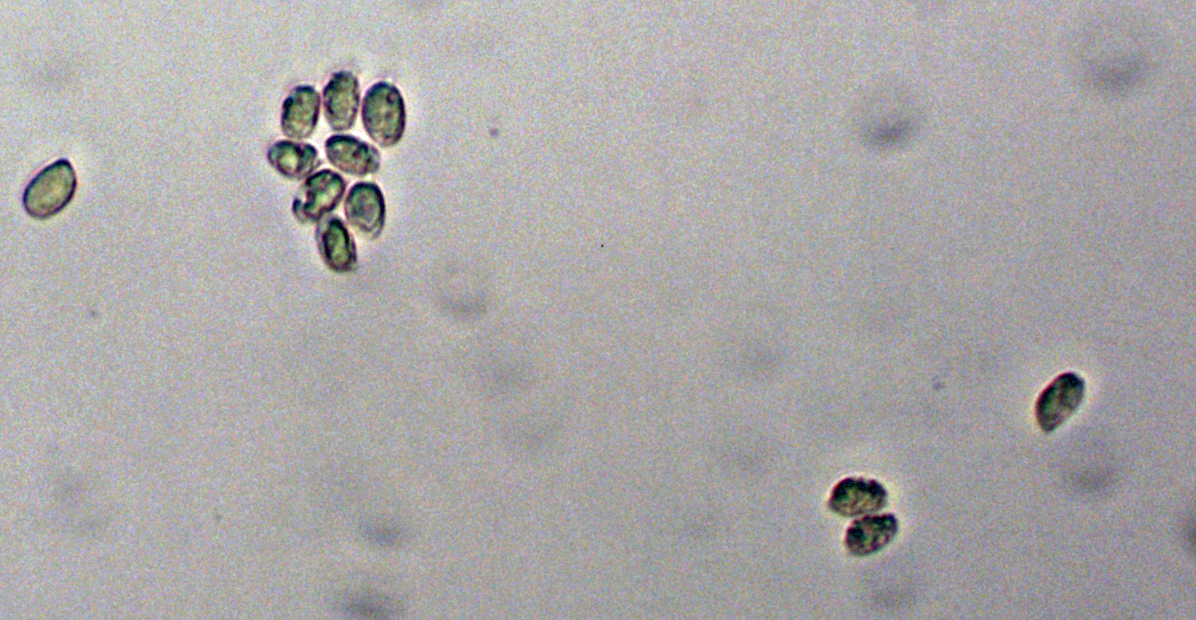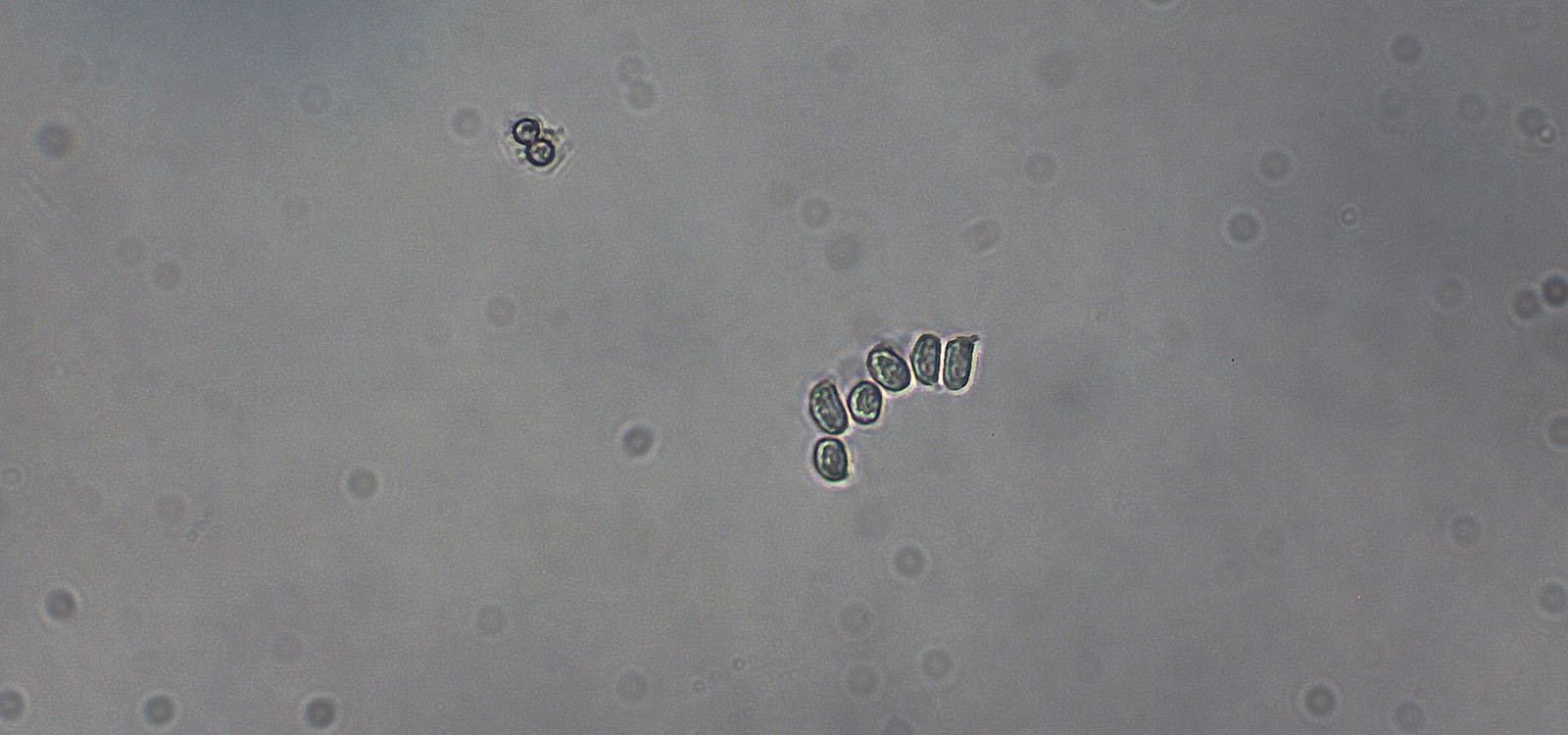Map Snapshot



57 Records
Status
Found solitary or (more often) in groups on ground, often in thick leaf litter in woods.
Description
Cap: Orange / yellow, viscid when fresh, smooth, conical to broadly conical (may be upturned in age); flesh thin yellowish. Gills yellow / white. Stalk: Yellow-orange, may be compressed / fluted. (J. Solem, pers. comm.)
Seasonality Snapshot
Source: Wikipedia
| Hygrocybe flavescens | |
|---|---|

| |
| Scientific classification | |
| Domain: | Eukaryota |
| Kingdom: | Fungi |
| Division: | Basidiomycota |
| Class: | Agaricomycetes |
| Order: | Agaricales |
| Family: | Hygrophoraceae |
| Genus: | Hygrocybe |
| Species: | H. flavescens
|
| Binomial name | |
| Hygrocybe flavescens (Kauff.) Singer
| |
| Synonyms | |
|
Hygrocybe chlorophana var. aurantiaca Bon | |
| Hygrocybe flavescens | |
|---|---|
| Gills on hymenium | |
| Cap is conical | |
| Hymenium is adnexed | |
| Stipe is bare | |
| Spore print is white | |
| Ecology is mycorrhizal | |
| Edibility is edible | |
Hygrocybe flavescens, commonly known as the golden waxy cap, is a species of Hygrocybe described from Michigan.[1] It is considered nonpoisonous to humans.[2] The species can be found in various forests and woodlands.[3]
The mushroom is yellow-orange.[3] Its cap ranges from 2.5 to 6 cm wide, and can be more orange in youth.[3] The stalk is 4 to 7 cm long, .5 to 1.5 cm wide.[4] The gills are more pale than the cap and stipe.[3] The spores are white, elliptical, smooth and inamyloid.[4] It has a mild taste and odor.[4]
Hygrocybe chlorophana is similar, noted in North America as having a more viscid stipe. This distinction is not made in Europe, indicating that they may be the same species.[3] It is considered edible, but undesirable. Mycologist David Arora describes it as "edible, but far from incredible".[5]
References
[edit]- ^ "Hygrocybe flavescens in MycoWeb".
- ^ Miller Jr., Orson K.; Miller, Hope H. (2006). North American Mushrooms: A Field Guide to Edible and Inedible Fungi. Guilford, CN: FalconGuide. p. 65. ISBN 978-0-7627-3109-1.
- ^ a b c d e Trudell, Steve; Ammirati, Joe (2009). Mushrooms of the Pacific Northwest. Timber Press Field Guides. Portland, OR: Timber Press. p. 64. ISBN 978-0-88192-935-5.
- ^ a b c Davis, R. Michael; Sommer, Robert; Menge, John A. (2012). Field Guide to Mushrooms of Western North America. Berkeley: University of California Press. pp. 122–123. ISBN 978-0-520-95360-4. OCLC 797915861.
- ^ Arora, David (1986). Mushrooms demystified: a comprehensive guide to the fleshy fungi (Second ed.). Berkeley: Ten Speed Press. ISBN 978-0-89815-169-5.
External links
[edit] Media related to Hygrocybe flavescens at Wikimedia Commons
Media related to Hygrocybe flavescens at Wikimedia Commons Data related to Hygrocybe flavescens at Wikispecies
Data related to Hygrocybe flavescens at Wikispecies
